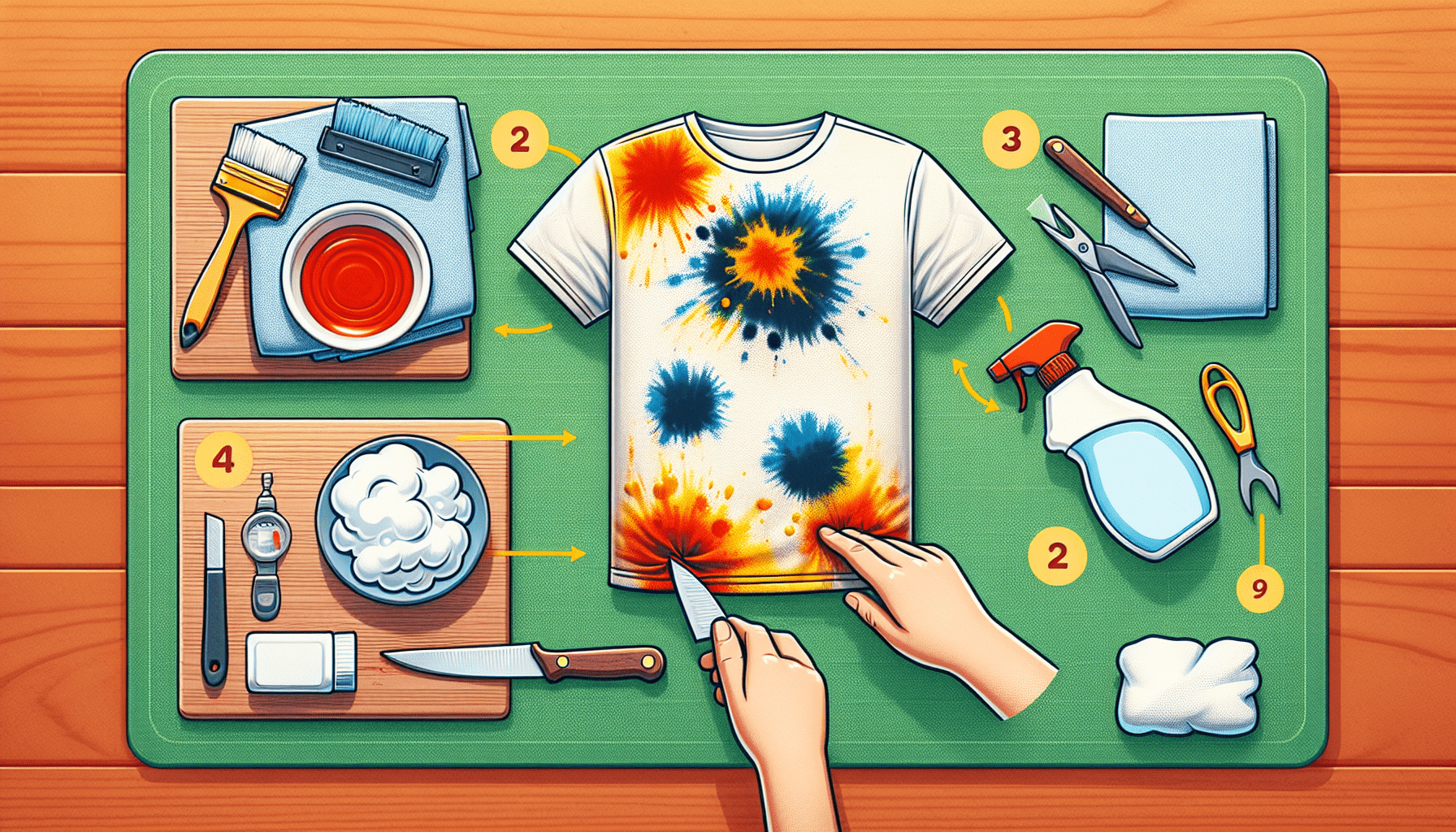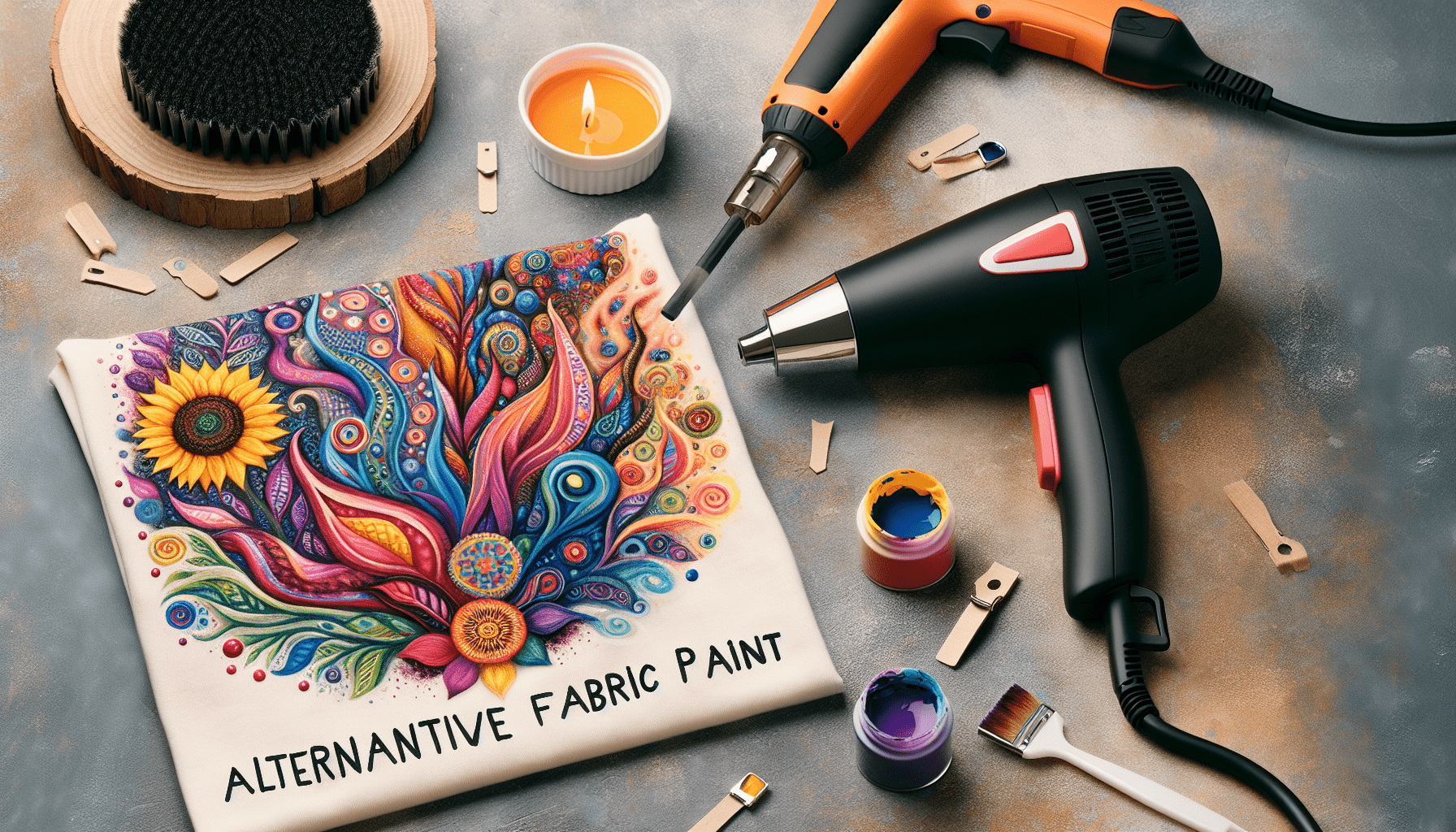Is fabric paint acrylic? If you’re new to the world of fabric painting, understanding the different types of fabric paint available can be overwhelming. One common question that often arises is whether fabric paint is acrylic. In this comprehensive guide, we will delve into the world of fabric paint, explore the various types available, and provide you with everything you need to know to unleash your creativity on fabric surfaces.
Understanding Fabric Paint
Fabric paint is a specialized type of paint that is designed for use on fabrics. Unlike traditional paints, fabric paint is formulated to adhere to fabric surfaces and create vibrant, long-lasting designs. Fabric paint comes in a variety of forms, including acrylic, oil-based, and fabric dye. Understanding the properties of each type of fabric paint is essential in choosing the right paint for your project.
What is Acrylic Fabric Paint?
Acrylic fabric paint is a type of fabric paint that is water-based and contains pigments suspended in an acrylic polymer emulsion. Acrylic fabric paint is known for its versatility, as it can be used on a wide range of fabrics, including cotton, polyester, and canvas. Acrylic fabric paint dries quickly, is durable, and can be heat-set for additional permanence.
Acrylic fabric paint is available in a range of viscosities, including heavy body, fluid, and fabric painting mediums. Heavy body acrylic paints are thick and highly pigmented, making them ideal for creating bold, textured designs on fabric. Fluid acrylics are thinner and more translucent, allowing for smooth, even application on fabric surfaces. Fabric painting mediums can be added to acrylic paint to increase flow, extend drying time, and improve adhesion to fabric fibers.
Types of Fabric Paint
When choosing fabric paint for your project, it’s essential to consider the type of fabric you will be painting on and the desired outcome of your design. Different types of fabric paint have varying properties, including opacity, texture, and adhesion. Understanding the different types of fabric paint available will help you select the best paint for your specific needs.
Acrylic Fabric Paint
Acrylic fabric paint is one of the most popular types of fabric paint due to its versatility and ease of use. Acrylic fabric paint is available in a wide range of colors and finishes, including matte, satin, and metallic. Acrylic fabric paint can be used to create intricate designs on fabric surfaces, such as t-shirts, tote bags, and canvas shoes.
Acrylic fabric paint can be applied with a paintbrush, sponge, or airbrush, depending on the desired effect. When using acrylic fabric paint, it is essential to follow the manufacturer’s instructions for heat-setting the paint to ensure its permanence on fabric surfaces.
Oil-Based Fabric Paint
Oil-based fabric paint is another type of fabric paint that is popular among artists and crafters. Oil-based fabric paint is known for its rich, opaque colors and smooth texture. Oil-based fabric paint provides excellent coverage on fabric surfaces and can be used to create bold, vibrant designs.
Unlike acrylic fabric paint, oil-based fabric paint requires longer drying times and may need to be heat-set to ensure permanence. Oil-based fabric paint is ideal for creating detailed, intricate designs on fabric surfaces, such as quilts, garments, and home decor items.
Fabric Dye
Fabric dye is a type of liquid colorant that is used to permanently color fabric surfaces. Fabric dye is available in a wide range of colors and can be used to create vibrant, long-lasting designs on fabric. Fabric dye is absorbed by the fabric fibers, resulting in a soft, seamless finish that won’t crack or peel.
Fabric dye is commonly used for tie-dyeing, batik, and other fabric dyeing techniques that require the color to penetrate the fabric deeply. Fabric dye can be applied to fabric surfaces using a variety of methods, including dipping, pouring, and painting. Fabric dye is an excellent choice for creating unique, one-of-a-kind designs on fabric surfaces.

Choosing the Right Fabric Paint
When selecting fabric paint for your project, it’s essential to consider the type of fabric you will be painting on, the desired outcome of your design, and your preferred application method. Each type of fabric paint has unique properties that make it suitable for different projects and techniques.
Factors to Consider When Choosing Fabric Paint
- Fabric Type: Consider the type of fabric you will be painting on, as some types of fabric paint are better suited for specific fabric fibers.
- Color Selection: Choose fabric paint colors that complement your design and provide the desired aesthetic impact.
- Application Method: Select fabric paint that can be applied using your preferred method, such as painting, stamping, or stenciling.
- Finish: Decide on the finish you want for your design, whether it’s matte, satin, metallic, or glossy.
By considering these factors, you can choose the right fabric paint for your project and create stunning designs on fabric surfaces.
Fabric Painting Techniques
Fabric painting offers endless creative possibilities, allowing you to transform plain fabric surfaces into works of art. Whether you’re a beginner or an experienced artist, there are numerous fabric painting techniques that you can explore to express your creativity.
Stenciling
Stenciling is a popular fabric painting technique that involves using a stencil to create precisely detailed designs on fabric surfaces. Stencils can be made from various materials, such as plastic, cardboard, or vinyl, and can be used repeatedly to create uniform patterns on fabric. Stenciling is ideal for creating borders, motifs, and repeating patterns on fabric surfaces.
To stencil a design on fabric, place the stencil on the fabric surface and secure it in place with tape or adhesive. Apply fabric paint to the stencil using a stencil brush, sponge, or airbrush, ensuring that the paint is evenly distributed. Carefully lift the stencil to reveal the painted design on the fabric surface.
Tie-Dyeing
Tie-dyeing is a classic fabric dyeing technique that involves twisting, folding, and securing fabric with rubber bands before applying fabric dye. Tie-dyeing creates bold, vibrant designs on fabric surfaces, with unique patterns and color combinations. Tie-dyeing is a fun and easy way to add a pop of color to plain fabric items, such as t-shirts, bandanas, and tote bags.
To tie-dye fabric, lay the fabric flat and fold, twist, or bunch the fabric into desired shapes. Secure the fabric with rubber bands to create sections for dye application. Apply fabric dye to each section of the fabric, ensuring that the colors do not blend together. Allow the fabric to dry completely before removing the rubber bands and revealing the tie-dyed design.
Batik
Batik is a traditional fabric dyeing technique that involves applying hot wax to fabric surfaces to create intricate designs. Batik allows artists to create detailed, multi-colored designs on fabric by using a combination of wax and fabric dye. Batik is known for its intricate patterns and vibrant colors, making it a popular fabric painting technique among artists and crafters.
To create a batik design on fabric, use a tjanting tool or brush to apply hot wax to the fabric surface in the desired pattern. Allow the wax to cool and harden before applying fabric dye to the fabric. The wax resists the fabric dye, creating a barrier that prevents the colors from blending together. Once the fabric dye has dried, remove the wax by soaking the fabric in hot water, revealing the batik design underneath.

Fabric Painting Supplies
Before you begin your fabric painting project, it’s essential to gather all the necessary supplies to ensure a successful outcome. Fabric painting requires specific tools and materials to achieve professional results and create long-lasting designs on fabric surfaces.
Essential Fabric Painting Supplies
- Fabric paint: Choose high-quality fabric paint that is suitable for the type of fabric you will be painting on.
- Fabric: Select fabric that is pre-washed and free of any finishes that may inhibit paint adhesion.
- Paintbrushes: Use a variety of paintbrushes in different sizes and shapes to achieve different effects and details in your design.
- Palette: Use a palette to mix and blend colors, ensuring that you have the right shades for your design.
- Fabric markers: Use fabric markers for outlining designs, adding details, and creating precise lines on fabric surfaces.
By gathering these essential fabric painting supplies, you can embark on your fabric painting journey with confidence and create beautiful designs on fabric surfaces.
Caring for Fabric Painted Items
Once you have completed your fabric painting project, it’s essential to care for your painted items properly to ensure their longevity and vibrancy. Fabric paint requires special care to maintain its color intensity and adhesion to fabric surfaces over time.
Tips for Caring for Fabric Painted Items
- Heat-set the paint: Follow the manufacturer’s instructions for heat-setting fabric paint to ensure its permanence on fabric surfaces.
- Wash gently: Hand wash fabric painted items in cold water with a mild detergent to prevent color fading and paint flaking.
- Air dry: Allow fabric painted items to air dry flat or hang them to dry to maintain their shape and prevent distortion.
- Iron carefully: Iron fabric painted items on the reverse side with a pressing cloth to protect the painted design from heat damage.
By following these tips for caring for fabric painted items, you can enjoy your creations for years to come and showcase your artistic talents on fabric surfaces.
Conclusion
Fabric paint offers endless creative possibilities for artists and crafters to explore and express their unique style on fabric surfaces. Understanding the different types of fabric paint available, choosing the right paint for your project, and exploring fabric painting techniques are essential steps in unleashing your creativity and creating stunning designs on fabric. Whether you’re a beginner or an experienced artist, fabric painting is a rewarding and enjoyable craft that allows you to transform plain fabric items into works of art.
In this guide, we have covered the basics of fabric painting, including the types of fabric paint, fabric painting techniques, fabric painting supplies, and caring for fabric painted items. By following these tips and techniques, you can embark on your fabric painting journey with confidence and create beautiful, long-lasting designs on fabric surfaces. Let your imagination soar and unleash your creativity with fabric paint – the possibilities are endless!



